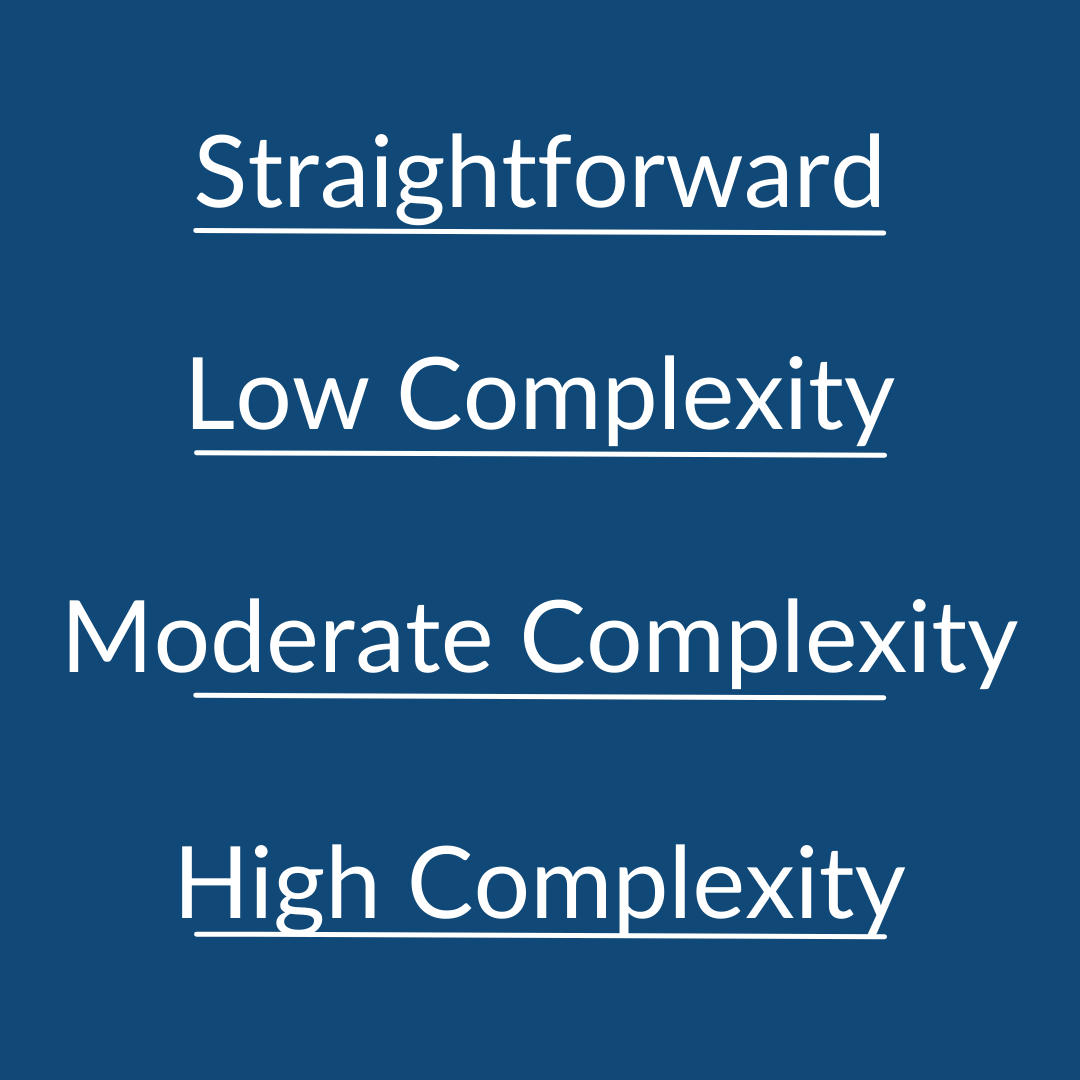The Centers for Medicare & Medicaid Services (CMS) have been voicing their concerns and seeking public comments regarding the current evaluation and management (E/M) documentation guidelines. CMS understands that the current guidelines are outdated and have commented on the importance of Medical Decision Making and time. With this the possibility of changing or eliminating the history and exam requirement.
Below we will discuss Medical Decision Making and explain how to calculate the final level of Medical Decision-Making result.

Overview of Medical Decision Making
According to CMS, the levels of E/M services recognizes four types of Medical Decision Making:
- Straightforward
- Low complexity
- Moderate complexity
- High complexity
Medical Decision Making refers to the complexity of establishing a diagnosis and/or selecting a management option as measured by the following;
- The number of possible diagnoses and/or the number of management options that must be considered;
| Problem | Number | Points | Total: (number x points) |
| Self-limited or minor | Max 2 points | ||
| Established problem to provider (stable or improved) | |||
| Established problem to provider (worsening) | |||
| New problem to provider with no additional work up planned | Max = 3 points | ||
| New problem to provider with additional work up planned | |||
| Total | |||
- The amount and/or complexity of medical records, diagnostic tests, and/or other information that must be obtained, reviewed and analyzed;
| Reviewed / Ordered Data | Points |
| Review and/or order lab test(s) | 1 |
| Review and/or order test(s) in the radiology section of CPT | 1 |
| Review and/or order test(s) in the medicine section of CPT | 1 |
| Discussion of test results with performing physician | 1 |
| Decision to obtain old records and/or obtain history from someone other than the patient | 1 |
| Review and summarization of old records and/or obtaining history from someone other than the patient and/or discussion of case with another health care provider. | 2 |
| Independent visualization of image, specimen or tracing (NOT simply a review of report, do not use if billing for the interpretation). | 2 |
| Total: | Cumulative |
- The risk of significant complications, morbidity and/or mortality, as well as comorbidities, associated with the patient's presenting problem(s), the diagnostic procedure(s) and/or the possible management options.
| Level of Risk | Presenting Problem(s) | Diagnostic Procedure(s) Ordered | Management Options Selected |
| Minimal | One self-limited or minor problem | Lab test, simple X-rays, EKG, Echo, KOH prep | Rest, gargles, elastic bandages, superficial dressings |
| Low | Two or more self-limited or minor problems, one stable chronic illness, acute uncomplicated illness or injury. | PFT, non-cardiovascular imaging studies with contrast, superficial needles biopsies, lab test requiring arterial puncture, skin biopsies. | OTC meds, minor surgery with no identified risk factors, PT, OT, IV fluids without additives. |
| Moderate | One or more chronic illness with mild exacerbation, two or more chronic illnesses, undiagnosed new problem with uncertain prognosis. | Cardiac stress test, diagnostic endoscopies, cardiovascular imaging with contrast and no identified risk factors, obtain fluid from a body cavity | Minor surgery w/identified risk factors, elective major surgery, prescription drug management, IV fluids w/additives. |
| High | One or more chronic illnesses with sever exacerbation, acute or chronic illness or injuries that poses a threat to life. | Cardiovascular imaging with contrast and identified risk factors, diagnostic endo with identified risk factors, discography. | Elective major surgery w/identified risk factors, ER major surgery, drug therapy requiring intensive monitoring for toxicity. |
The result of the final level of Medical Decision Making takes the number or diagnoses/treatment options, amount of data reviewed/ordered, and level of risk:
| The Final Results Level of Medical Decision Making | ||||
| Number of diagnoses/treatment options | 1 | 2 | 3 | 4 |
| Amount of data reviewed/ordered | 0 or 1 | 2 | 3 | 4 |
| Level of risk | Minimal | Low | Moderate | High |
| Medical Decision-Making Level | Straightforward | Low | Moderate | High |
Your Medical Decision Making level must meet or exceed for at least two factors above.

For example, if you have 4 number of diagnosis/treatment options selected + 0 or 1 Amount of data reviewed/ordered + Moderate level or risk selected; your MDM level = Moderate.
So, why is Medical Decision Making so important?
Your Medical Decision Making score should be what drives your documentation as well as your coding. As we perform our audits, we regularly see that a clear understanding of Medical Decision making is one of the top reasons for loss of revenue for medical practices.
If you have questions about HCP's coding services, contact us today by phone: 855-427-0427 or by email: support@hcp.md
Author
Director of Compliance & Risk Management
Updated December 2025

